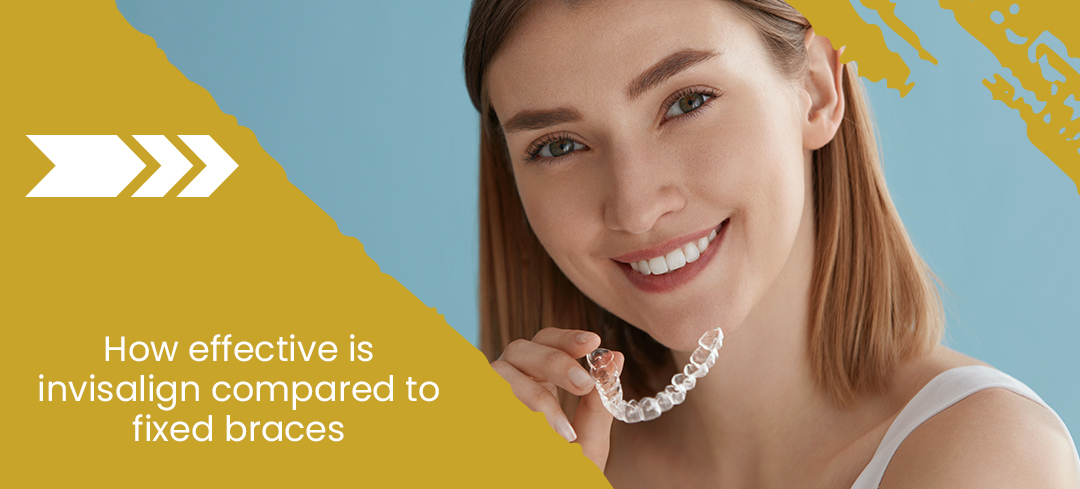Fixed braces are being used to straighten the teeth for years together. In fact orthodontists have relied on the tool across the ages more than anything else. Modern orthodontics is not even 500 years old; it dates back to the 1700s. Archaeological excavations on the other hand show the science of teeth straightening existed in the society since 1000 BC.
Considering the relevant aspects it is absolutely safe to say that fixed braces have stood the test of time. It is still one of the most preferred tools for orthodontists all over the world. Thanks to never-ending research and constant improvement of technology, orthodontic braces are becoming increasingly efficient in straighten the teeth. In contrast to that of the past, modern braces are much visible too. The earlier braces featured train track wires and brackets both made of metal. Now you can go for clear or transparent brackets to maintain discretion about your treatment.
To cut a long story short, fixed braces have come a long way in terms of modernisation and advancement. Yet these are not randomly suitable for one and all. In order to address this limitation a brand new generation of clear, transparent, removable aligners made of mouldable plastic were introduced by the name invisalign.
Invisalign worked up a storm at its arrival. Today by a rough estimate it is responsible for over 9 million improved smiles. Virtually these braces remain invisible inside the mouth. The removable aligners are easy to take out from the mouth to eat, drink, brush or floss the teeth anytime.
But is it (Invisalign) as efficient as fixed braces to straighten the teeth?
This is a very common and justified question. Let us explore the facts in the following section of the blog post.
How well invisalign straightens the teeth?
Also known as clear aligners or invisible braces, invisalign was first introduced during the mid 1990s. initially it got a mixed response. Patients accepted the removable clear aligners heartily whereas a section of orthodontists remained sceptical.
In contrast to the present version, the earlier invisalign technology had much limited efficiency. Then it could only handle simple and uncomplicated cases teeth realignment. In just no way could it match up with the dramatic transformations that fixed braces could deliver. Most importantly the clear aligners could not perform vertical shifting of the teeth. In easier words everything boiled down to the simple fact invisalign was not ideal for everyone. It is also important to mention that conventional fixed braces could easily provide much better treatment results compared to the first version of clear braces.
Gradually the technology involving invisible braces evolved and at one point of time it could compete with the traditional metal braces (also called fixed braces). In this day and time, invisalign is ideal for the overwhelming majority of people all over the world. Today invisalign is certainly the better option over fixed braces to correct certain bite problems, like open bite.
Invisalign versus other removable braces
Do you know invisalign happens to be the most advanced aligner system in the world? The aligners are made from a patented SmartTrack substance. As a result it is not only easier to pop these aligners in and out but also very comfortable to use or wear.
Consistent research for more than 8 years resulted in the development of invisalign braces. It can no way be compared with the removable braces that you ordered online. Invisalign picked up the skill of shifting the teeth vertically with the introduction of attachments. Attachments are basically tiny dots made of composite or filling material. They come in the colour of the teeth. These are meant to give the aligners a firm grip and are attached to selective teeth. You should know that mail order aligner do not come with attachments and thus possess limited efficiency in straightening the teeth.
Other significant features of invisalign that are worth mentioning include:
- Power ridges – that help to upright the teeth and
- 3D ClinCheck – the robust software application that previews your treatment outcome
The improved version of invisalign also works faster. Older invisalign asked you to shift to a new pair of aligners every two weeks. Now it allows changing aligners every week. Thus your treatment time gets shortened to almost half. Simple misalignment cases require as less as below six months to get corrected.
What are the limitations?
Nothing in this world is absolutely perfect and neither is invisalign. Yet it ranks as a better option to correct problems of severely crowded, rotated or tilted teeth. The shape and size of your also have to be considered. The plastic braces usually do not get a secure grip on the teeth that are small and round.
If you are ruled out from invisalign treatment there is nothing to worry. These days a large number of options exist that are as suitable and efficient as it, some of these include incognito braces, clear fixed braces and others. All these modern orthodontic braces are discreet in nature and are ideal if you want to keep your treatment a secret.
Now let us bust a few baseless myths about the cutting-edge teeth straightening technology, invisalign.
Myth #1: Traditional braces offer better results
As it has already been discussed above the modern version of invisalign is unbelievably efficient and can easily give traditional metal brackets a diehard competition. The differences that now exist can be summed up as invisalign is easily removable, more discreet and has lesser interference in your normal day to day life. A recommended invisalign provider in London further adds it also requires fewer visits to your orthodontic compared to its conventional metallic counterparts.
Myth #2: Attachments are mandatory in every case
Invisalign attachments are tiny lumps made of composite material and come in the colour of the tooth. These are applied to the selective teeth to enable invisalign braces a better grip to shift the teeth. Attachments are not mandatory for everyone or in every case. Every teeth straightening case using invisalign is unique and use of attachments completely depends on the conditions of a particular case. If you are in need of those, your orthodontist will mention it on his or her own.


